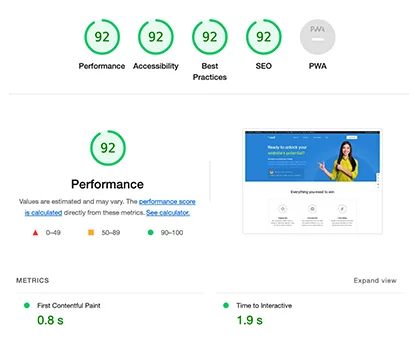Unlocking the Power of Personalization: Creating Lasting Connections Through Emails

Email Personalization is a technique used to captivate the recipients with a personalized mail having tailor-made content to grab their attention. The conventional lackluster and generic emails have become outdated in today’s marketing world. Personalization can provide the much-needed boost to your campaigns, resulting in lasting customer connections and increased conversions. Using the recipient’s name and targeting content and offers based on their needs can go a long way in making a positive impact. Segmentation and categorization of your contacts list is another great technique to drive more traffic. Personalization leads to better engagement and nurturing the emotional connection with the recipient goes a long way in establishing trust. Let’s delve deeper into effective personalization techniques for an impactful email marketing campaign.
Effective Email Personalization Techniques
Picture getting an email that starts with, “Dear Valued Customer.” Yawn. You’re not valued; you’re receiving an automated email. The use of a recipient’s name makes a lasting impression. It sparks curiosity and, in turn, a positive outlook towards your brand. The more targeted your content, the better your chances of keeping your subscribers engaged. When it comes to personalization, the difference between a “one size fits all” approach and a targeted one is vast. List segmentation and categorization allow precision in delivering content specific to your subscribers’ interests.
For example, consider a loyal customer who’s been with you for years; their purchase history can indicate specific product preferences. Using this data allows you to create highly targeted email campaigns that speak to your audience on a personal level. Engagement rates skyrocket. See how we added in humor? No one likes getting mass emails, so why should you send them? With proper personalization, your subscribers feel appreciated and seen. This creates a lasting relationship that can significantly impact your business’s success.
The Power of Emotional Connection
The Power of Emotional Connection Want to create a lasting impression on your audience? Well, facts and numbers won’t do it for you, but emotions surely will. Emotional connection is what your audience is looking for, that human touch that makes your brand empathetic and relatable. Here’s how you can use emotional triggers to your advantage. Firstly, highlight emotional triggers in your emails. Catchy subject lines that keep the reader hooked, followed by stories that linger in their minds, that’s what you need. A personal anecdote that people can relate to, touches of humour that lighten the mood, and value-based content that enriches their lives should be your go-to strategy. Makes sense, right?
Secondly, creating a sense of urgency convinces the reader to act immediately. Use action verbs that inspire a call to action and add a bit of urgency. ‘Limited’ or ‘Exclusive’ offers generate excitement and make the reader feel special. Time-bound campaigns, countdowns and such tactics push the reader into action. Trust me, it works every time. Lastly, add Social proof and testimonials to your emails. Customer stories and experiences shared on your social media pages, positive reviews, and ratings on your website exude trust and reliability – things that capture your audience’s attention and build lasting relationships with your brand. So, give your customers a voice and let their stories do the talking. It’s important to understand that the goal goes beyond merely selling a product; rather, it centers around crafting a unique and immersive experience for the customers.

Data-Backed Personalization Strategies
Personalization in email marketing has been around for a while now. As marketers, we know that the more we know and understand our audience, the more we can tailor our message to meet their specific needs. But email personalization is not just about using the recipient’s name or other basic data points in the subject line or email copy. One of the best ways to personalize an email is by leveraging past purchase history. By analyzing purchase data, marketers can make highly targeted recommendations that are more likely to result in a purchase. Similarly, personalization based on behavior and preferences can also be incredibly effective. By tracking email opens, clicks, and website activity, marketers can gain insights into what a subscriber is interested in and use that information to deliver more relevant messaging. The integration of dynamic content is another effective personalization tool.
This involves dynamically changing the content of an email based on certain criteria, such as location, subscriber type, or purchase history. But as with all personalization tactics, it is crucial to test and optimize to make sure you are delivering what resonates best with your audience.
Monitor key metrics, such as open rates, click-through rates, and engagement levels, to understand which personalization strategies are driving results and which may need optimization. When it all comes together, data-backed personalization enables marketers to understand and cater to each subscriber individually, at scale. By leveraging purchase history, behavior, and dynamic content, marketers can create a powerful emotional connection with subscribers that lays the foundation for a long-term and profitable relationship.
Testing and Optimization
Personalization in email marketing is not a one-time deal- you don’t get it right once and then sit back and relax. You need to constantly test and optimize the emails to keep the recipients engaged. A/B testing is an essential tool to see which subject lines and content work best for a particular segment of the audience. The data obtained from engagement metrics such as open rates, click-through rates, etc. helps to fine-tune the messages and achieve a better response.
Continuous optimization of emails involves taking the insights obtained from testing and metrics and implementing them to improve the future performance of the emails. This cycle of testing, analyzing, and optimizing should be continuous to ensure that the email marketing campaign stays fresh, relevant, and delivers results. Remember, email personalization requires a deep understanding of the audience, and effective personalization techniques and strategies can be honed only through continued testing and optimization.
Technical Aspect of Email Personalization
Email Personalization tools have revolutionized the way marketers connect with their target audience. With an array of tools available, email customization has reached new heights. These tools have features like personalized greetings, dynamic content, and automated messaging. Also, the software integration and automation options available have helped scale email marketing campaigns. The metrics tracking and analysis feature included in the software allows marketers to gain insight into the response rate. Also open rate, and click rate, giving a better understanding of the campaign’s effectiveness. With in-depth metrics analysis, marketers can further optimize their strategies for better results. In short, the technical aspect of email personalization has simplified the marketer’s task. Thus allowing them to focus on other aspects of marketing.
Conclusion
We’ve covered a lot of ground in this blog, unlocking the power of email personalization and its importance in marketing. From using recipient’s names to past purchase history to A/B testing, the right mix of personalization techniques can lead to significant ROI. Emotional connection and social proof also played a crucial role in creating lasting connections with the audience. With the right tools, software integration, and metrics tracking, email personalization can be a game-changer in your marketing strategy. Remember, a one size fits all approach is destined to fail. So, keep testing, optimizing, and personalizing for better results.

